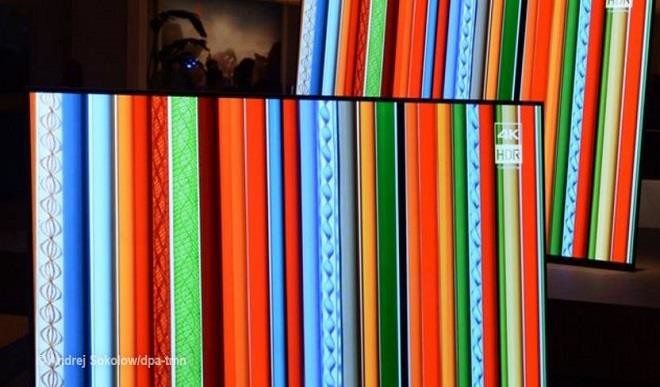Ultra-thin TVs have arrived, but with shocking price
Televisions that are as thin as framed pictures and boast deep blacks in the image have arrived, but don’t expect them to be cheap. Sony announced its entry into high-contrast OLED displays with the Bravia A1E at the recent Consumer Electronics Show (CES) in Las Vegas, an event where advances in smart home technology were […]


Televisions that are as thin as framed pictures and boast deep blacks in the image have arrived, but don’t expect them to be cheap.
Sony announced its entry into high-contrast OLED displays with the Bravia A1E at the recent Consumer Electronics Show (CES) in Las Vegas, an event where advances in smart home technology were also a big drawcard this year.
Sony promises better sound too, as the frame is supposed to act as a resonator for the speakers. Sales will start in March and no price has been announced yet.
OLED technology offers rich colours, more contrast and really dark black as well as a slim television because of the absence of back-lighting. But the downside is that OLED costs much more than ordinary TVs.
So far LG of South Korea has been driving the market – it’s the only manufacturer producing large OLED panels. Earlier problems with a short life-span and high production costs have been solved, according to the industry.
Also at CES, Panasonic unveiled its OLED model, the TX-65EZW1004, which it said will produce a home cinema experience "optimized by Hollywood specialists."
LG, which came up with the technology, showed the Signature OLED W, a "wallpaper" television of just 2.57 millimetres thickness, which adheres to a wall using a magnetic mat.
The electronics and loudspeakers are housed in a soundbar that’s connected to the display via cable. The price and sales start hasn’t yet been announced.
Meanwhile Samsung, the world’s largest seller of TV sets, is pinning its hopes on QLED rather than OLED.
Its new top-of-the-range models use the latest version of the company’s "Quantum Dot" technology, which Samsung contends offers more contrast, deeper black and a picture that can be watched from almost any viewing angle. Here too, no prices were announced.
Another trend seen at CES was the ever-increasing number of devices and applications for the networked home which are voice-controlled.
This market is dominated by the systems of the big tech corporations, namely Amazon’s Alexa, HomeKit with Siri from Apple, Google’s Home Assistant and Microsoft’s Cortana. Graphics chip maker Nvidia announced that its Nvidia Shield Android TV console will now incorporate Google’s Home Assistant.
Also, Amazon displayed its ability to connect Alexa with devices from many other manufacturers, such as a speaker from Lenovo, a fridge from LG, home appliances from Whirlpool and various networked lamps. Meanwhile Apple’s HomeKit is connecting with networked cameras and a smoke detector.
Also on show were some more trivial solutions such as a networked shower that can be set to warm up while you’re still in bed. When the desired temperature is reached, an alert is sent to your smartphone.
Another novelty was a "smart" dust-bin that opens its lid upon voice command.
CES 2017 also saw plenty of drones, including small selfie drones that hover around the owner and take pictures or videos. Among them was the Hover Camera Passport, which is about the size of a hardback book and has its rotors hidden behind safety bars.
Then there was the underwater drone PowerRay which can dive as deep as 30 metres while transmitting 4K video. (DPA)
